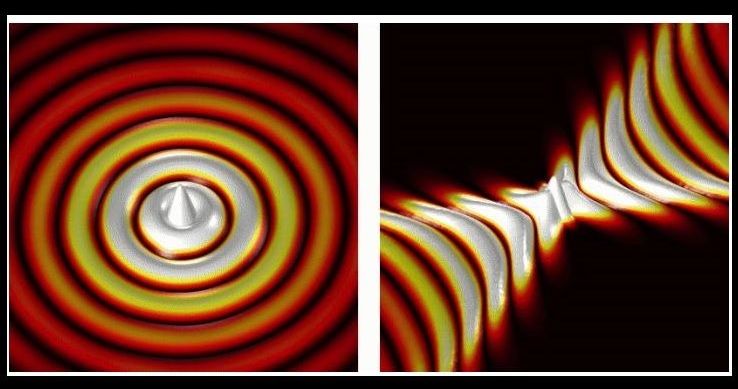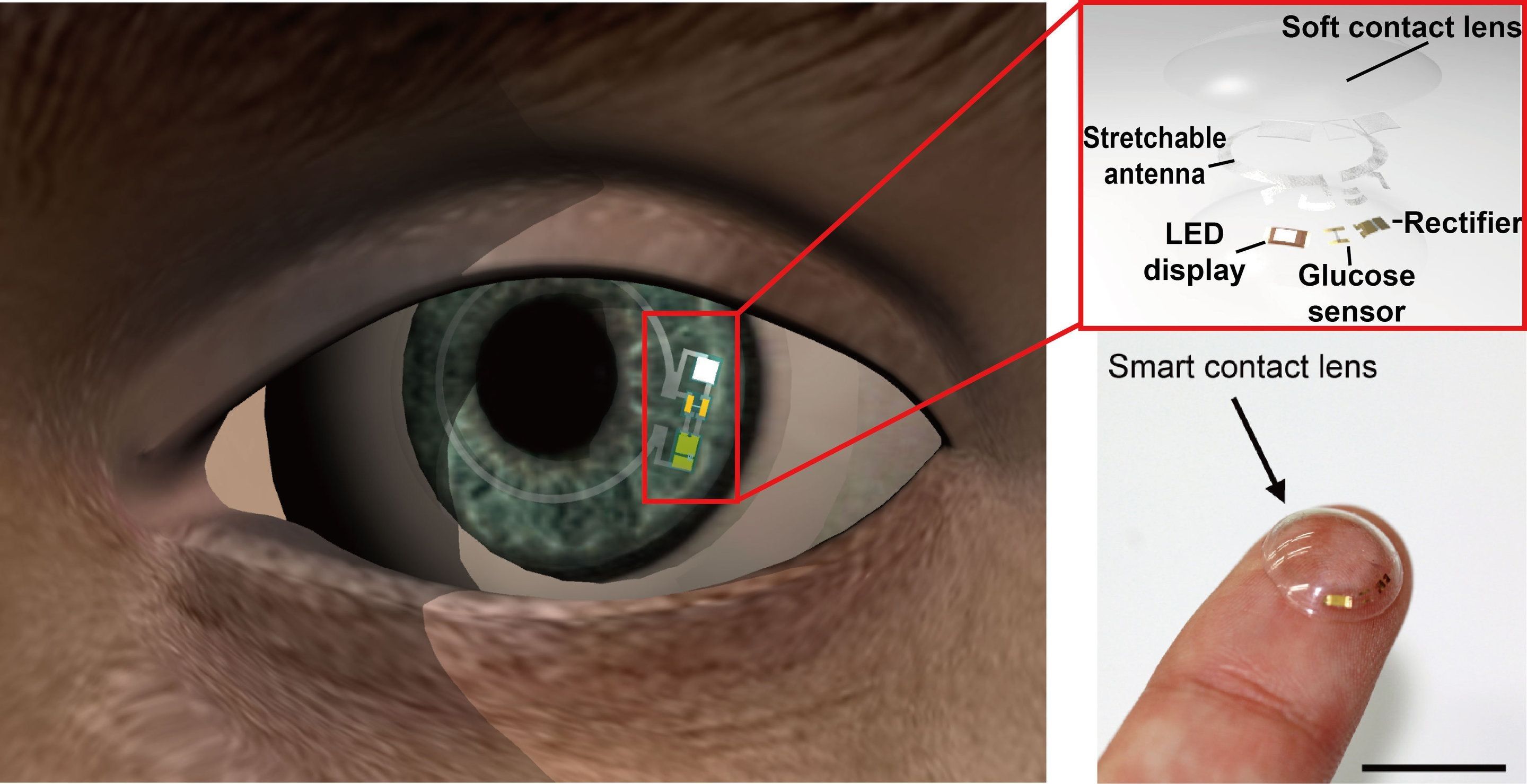Archive for the ‘materials’ category: Page 254
Feb 26, 2018
Scientists successfully inverted the circularly propagating optical waves
Posted by Genevieve Klien in category: materials
A new study has revealed that the optical waves or light waves can be turned upside down when they are allowed to propagate through specifically structured surfaces. Normally what happens is that the optical waves emerging out from a point source propagate circularly. That means the optical waves traveling away from a point source characteristically display circular, or convex, wavefronts.
The scientists compared these circular wavefronts to the waves seen on the water surface when a stone is dropped into the water. But the latest study revealed that these circularly propagating light waves’ wavefronts can be turned upside down with the help of a special surface. They developed a new material having a hyperbolic metasurface and successfully inverted the optical waves.
The study was led by Peining Li, an EU Marie Sklodowska-Curie fellow at nanoGUNE. According to him, the reason behind this circular propagation of optical waves is because of the fact that the medium through which light waves propagate is isotropic and homogenous. If the waves are isotropic in nature then their propagation is uniform in all direction and being homogenous means they carry the same characteristics throughout the propagation. But these optical waves can be inverted using specifically structured surfaces like the hyperbolic metasurfaces.
Continue reading “Scientists successfully inverted the circularly propagating optical waves” »
Feb 17, 2018
This New Graphene Invention Makes Filthy Seawater Drinkable in One Simple Step
Posted by Shailesh Prasad in categories: innovation, materials
Using a type of graphene called Graphair, scientists from Australia have created a water filter that can make highly polluted seawater drinkable after just one pass.
The technology could be used to cheaply provide safe drinking water to regions of the world without access to it.
“Almost a third of the world’s population, some 2.1 billion people, don’t have clean and safe drinking water,” said lead author Dong Han Seo.
Continue reading “This New Graphene Invention Makes Filthy Seawater Drinkable in One Simple Step” »
Feb 16, 2018
Researchers create first superatomic 2-D semiconductor
Posted by Genevieve Klien in categories: materials, particle physics
(Left) Superatomic structure and (right) exfoliated 15-nm-thick flakes of the material Re6Se8Cl2. Credit: Zhong et al. ©2018 American Chemical Society Atoms are the basic building blocks of all matter—at least, that is the conventional picture. In a new study, researchers have fabricated the first superatomic 2-D semiconductor, a material whose basic units aren’t atoms but superatoms—atomic clusters that exhibit some of the properties of one or more individual atoms. The researchers expect that the new material is just the first member of what will become a new family of 2-D semiconductors…
Feb 15, 2018
Graphene film makes dirty water drinkable in a single step
Posted by Shane Hinshaw in categories: materials, nanotechnology
Every year, millions of people around the world die from drinking unclean water. Now, researchers have developed a process that can purify water, no matter how dirty it is, in a single step. Scientists from Australian research organization CSIRO have created a filtration technique using a graphene film with microscopic nano-channels that lets water pass through, but stops pollutants. The process, called “Graphair”, is so effective that water samples from Sydney Harbor were safe to drink after being treated.
And while the film hails from graphene, Graphair is comparatively cheaper, faster and more environmentally-friendly to make, as its primary component is renewable soybean oil, which also helps maximise the efficiency of the purifying technique’s filter counterpart. Over time, oil-based pollutants can impede water filters, so contaminants have to be removed before filtering can even begin, but using Graphair removes these pollutants faster than any other method.
Water purification usually involves a complex process of several steps, so this breakthrough could have a significant impact on the some 2.1 billion people who don’t have clean, safe drinking water. “All that’s needed is heat, our graphene, a membrane filter and a small water pump. We’re hoping to commence field trials in a developing world community next year,” said lead author Dr Dong Han Seo, who added that the team is looking for industry partners to help scale up the technology, and is also working on other applications for Graphair, such as seawater and industrial effluents.
Continue reading “Graphene film makes dirty water drinkable in a single step” »
Feb 12, 2018
Microscopy breakthrough paves the way for atomically precise manufacturing
Posted by Genevieve Klien in categories: innovation, materials
A University of Texas at Dallas graduate student, his advisor and industry collaborators believe they have addressed a long-standing problem troubling scientists and engineers for more than 35 years: How to prevent the tip of a scanning tunneling microscope from crashing into the surface of a material during imaging or lithography. Details of the group’s solution appeared in the January issue of the journal Review of Scientific Instruments, which is published by the American Institute of Physics. Scanning tunneling microscopes (STMs) operate in an ultra-high vacuum, bringing a fine-tipped p…
Feb 8, 2018
US Scientists Have Figured Out A Way To Make Wood As Strong As Steel
Posted by Shailesh Prasad in category: materials
Some of the strongest materials to build with are titanium alloys but they are not only expensive but heavy as well. Researchers at the University of Maryland (UMD) have used a new densification process to make super wood that has the same strength and toughness as steel.
Wood is probably the most used construction material already and the UMD team is working to make it even more useful. Liangbing Hu is leading the team responsible for developing the super wood. The researchers first boil samples of wood in a watery mixture of sodium hydroxide and sodium sulfite, which partially removes lignin and hemicellulose from the material. This wood is then hot-pressed causing the cell walls to collapse and form highly-aligned cellulose nanofibers. This gives rise to densified wood, which is stronger than natural wood.
Jan 25, 2018
Graphene based glucose-monitoring contact lens comfortable enough to wear
Posted by Saúl Morales Rodriguéz in categories: biotech/medical, materials
A team of researchers with the Ulsan National Institute of Science and Technology in the Republic of Korea has developed a glucose monitoring contact lens that its makers claim is comfortable enough to wear. In their paper published on the open access site Science Advances, the group describes their contact lens and suggests it could be ready for commercial use within five years.
Diabetes results in unmanageable glucose levels, requiring those who have the disease to monitor and adjust them with insulin or medicine. Monitoring, unfortunately, requires pricking a finger to retrieve a blood sample for testing, which most people do not like. For that reason, scientists seek another way. A new method employs a contact lens. Prior research has shown glucose levels in tears follows that of glucose levels in the blood in many respects. To date, there are no commercially available contact lens products because, as the researchers note, they are made of hard materials that are uncomfortable in the eye. They claim to have overcome that problem by breaking apart the pieces of their sensing device and encapsulating each in a soft polymer and then connecting them together in a flexible mesh.
The polymer is the same type used in conventional contact lenses. The components of the device consist of a graphene-based sensor, a rectifier, LED display and a stretchable antenna. Power for the sensor is still external—it is held in the air a minimum of nine millimeters from the lens. The LED glows during normal conditions and turns off when high levels of glucose are detected. The flexibility of the lens and sensor components also allows for removal of the device in the same way as normal contact lenses—by grabbing and bending.
Continue reading “Graphene based glucose-monitoring contact lens comfortable enough to wear” »
Jan 19, 2018
Graphene Could Be a Source of Endless, Clean Energy
Posted by Shailesh Prasad in categories: energy, materials

Scientists have discovered an endless energy supply in the naturally occurring Brownian motion of graphene.















